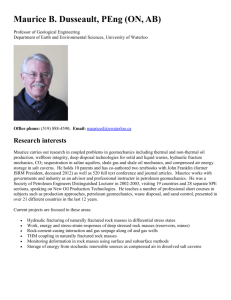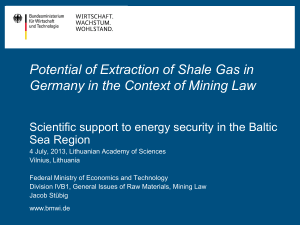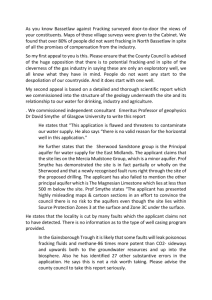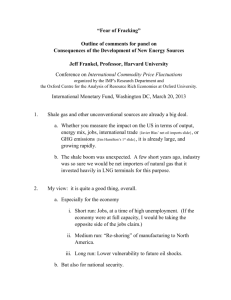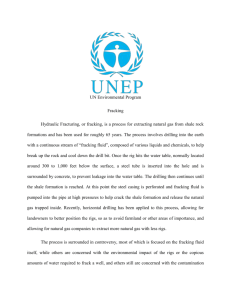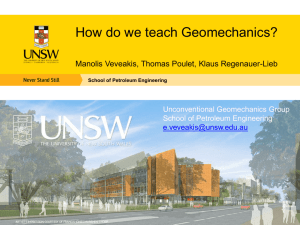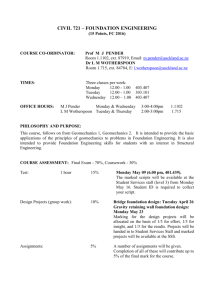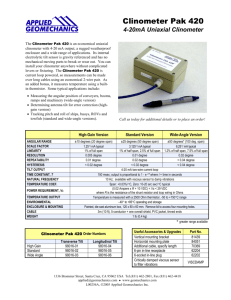A hypothetical geomechanics model for qualitative assessment of
advertisement
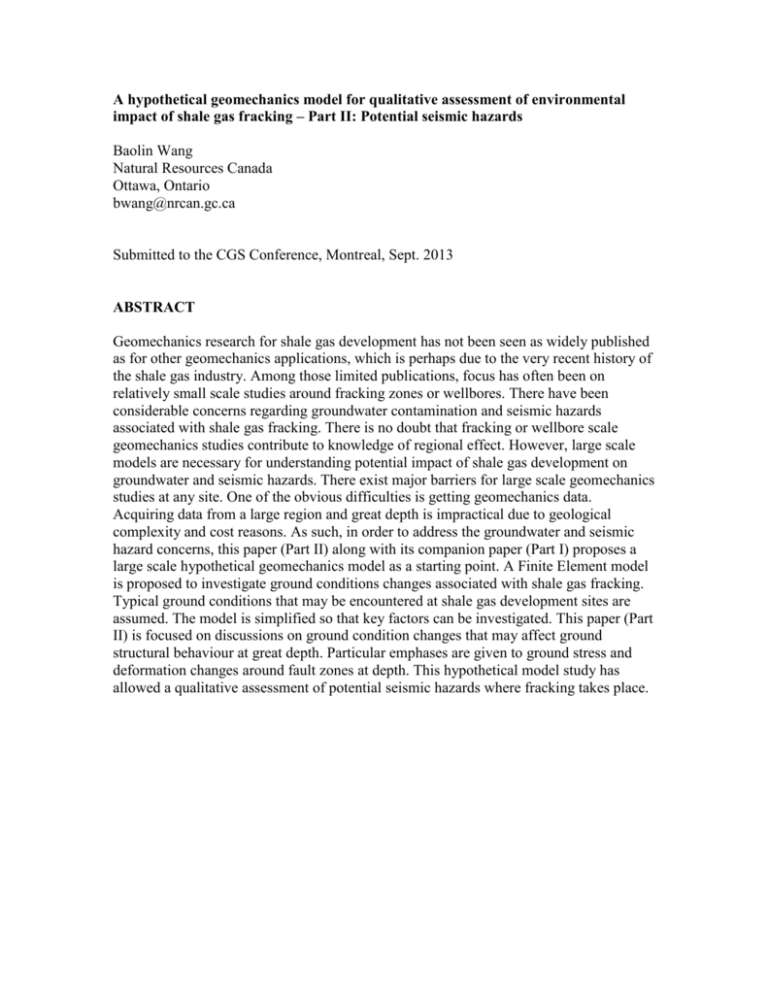
A hypothetical geomechanics model for qualitative assessment of environmental impact of shale gas fracking – Part II: Potential seismic hazards Baolin Wang Natural Resources Canada Ottawa, Ontario bwang@nrcan.gc.ca Submitted to the CGS Conference, Montreal, Sept. 2013 ABSTRACT Geomechanics research for shale gas development has not been seen as widely published as for other geomechanics applications, which is perhaps due to the very recent history of the shale gas industry. Among those limited publications, focus has often been on relatively small scale studies around fracking zones or wellbores. There have been considerable concerns regarding groundwater contamination and seismic hazards associated with shale gas fracking. There is no doubt that fracking or wellbore scale geomechanics studies contribute to knowledge of regional effect. However, large scale models are necessary for understanding potential impact of shale gas development on groundwater and seismic hazards. There exist major barriers for large scale geomechanics studies at any site. One of the obvious difficulties is getting geomechanics data. Acquiring data from a large region and great depth is impractical due to geological complexity and cost reasons. As such, in order to address the groundwater and seismic hazard concerns, this paper (Part II) along with its companion paper (Part I) proposes a large scale hypothetical geomechanics model as a starting point. A Finite Element model is proposed to investigate ground conditions changes associated with shale gas fracking. Typical ground conditions that may be encountered at shale gas development sites are assumed. The model is simplified so that key factors can be investigated. This paper (Part II) is focused on discussions on ground condition changes that may affect ground structural behaviour at great depth. Particular emphases are given to ground stress and deformation changes around fault zones at depth. This hypothetical model study has allowed a qualitative assessment of potential seismic hazards where fracking takes place.

